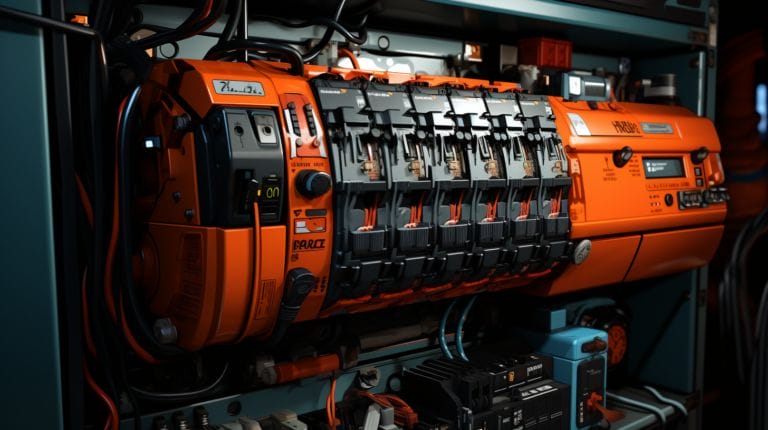What Gauge Wire for 12V LED Lights: A Complete Wiring Guide
When it comes to setting up 12V LED lights, choosing the right gauge wire is crucial for ensuring optimal performance and safety.
Have you ever wondered why wire gauge matters so much in this context? It’s because the thicker the wire, the less resistance it has, which is crucial for the efficient use of my LED lights. In our What Gauge Wire for 12V LED Lights guide, we will explore how selecting the appropriate wire gauge can make a significant difference in the functionality and longevity of your 12V LED lighting system, emphasizing the need to meet the specific wire requirements of your LED lights.
Understanding this fundamental aspect can help you navigate the intricacies of wiring your LED lights effectively, so you can create a setup that not only looks great but functions flawlessly, especially when you consider the terminal connections and the important use of small wire for certain applications.
Key Takeaways
- Choose wire gauge based on LED lights’ current draw to ensure optimal performance.
- Select wire with ampacity higher than total current draw for safety and efficiency.
- Inspect wire insulation for damage and secure wires properly during installation.
- Use flexible stranded wire with durable insulation for reliable 12V LED lighting setup.
Understanding the Basics of LED Lighting and Voltage

LED lights operate on a low voltage system, making them highly efficient and cost-effective lighting solutions. When setting up LED strips, consider the power supply and wire size, ideally a 16-gauge wire, to ensure optimal performance and longevity. The voltage drop, or the reduction in voltage along the wire’s length, is key in determining the right wire gauge for your 12V LED setup.
For 12V LED lights, opt for a thicker wire with a lower gauge number to minimize resistance and voltage loss. The correct wire size ensures maximum LED strip efficiency and prevents overheating and safety hazards.
To determine the right wire gauge for your 12V LED lights, consider the total wire length, the LEDs’ current draw, and the power supply type. Calculate the voltage drop based on these factors to select the right wire gauge. This maintains the desired brightness and performance of your LED lighting system.
Decoding the Wire Gauge System for LED Lighting

Understanding the wire gauge, or the American Wire Gauge (AWG), is crucial for your LED lighting project to ensure it meets the luminous requirements of your LED lights. It’s a standardized system signifying the wire’s diameter. In LED lighting, the wire gauge determines the ampacity – the maximum current that a wire can safely carry.
Selecting the right wire gauge ensures the wires can handle the load without overheating. For lower voltage systems like 12V LED lights, use thicker wire gauges to reduce voltage drop and maintain efficiency.
Choosing the Right Wire Gauge for 12V LED Lights

Selecting the correct wire gauge is essential for your 12V LED lights’ efficient installation and operation, ensuring you meet the requirements of your LED lights. Here are some key points:
- Amp Rating: Understand your LED lights’ amp rating. Choose the right wire gauge to handle the current flow without overheating and avoid a scenario where a thinner wire could start a fire.
- Wattage of LED Lights: Consider the wattage as it impacts the amount of current they draw. This influences the wire gauge needed for proper installation, ensuring the wire led connections are secure and efficient.
- Type of Installation: Whether it’s a single light fixture or lights connected in parallel determines the wire gauge required.
- Selecting the Wire Material: Choose an appropriate wire material to maintain the integrity of the electrical connection.
- Importance of Correct Wire Gauge: The right wire gauge, for instance, a 16-gauge wire, prevents voltage drop and enhances your 12V LED lights’ overall performance and longevity, making them a safer use for my led setup.
Practical Guide to Wiring 12V LED Lights

When wiring 12V LED lights, choose a wire gauge that can handle the LED lights’ current draw. Consider the length of the wire run. The wire’s ampacity should match or exceed the LED lights’ total current draw to prevent overheating and hazards.
Inspect the insulation of the wires and secure them properly during installation. Always disconnect the power source before starting any wiring work. Follow a step-by-step approach and double-check connections to troubleshoot common wiring issues effectively.
How Can I Ensure Proper Wiring for High-Lumen Solar Lights for Outdoor Use?
When installing high-lumen solar lights for outdoor use, ensure proper wiring to maximize the efficiency of the lighting system. Use the highest lumens for solar lights to illuminate large outdoor areas effectively. Choose the correct gauge of wire to handle the power load and install the wiring carefully for safety and longevity.
Optimizing Your Low Voltage LED Lighting Setup

Let’s delve into optimizing our low voltage LED lighting setup for maximum efficiency, focusing on the importance of choosing the right wires and terminals for the specific requirements of your LED lights. When it comes to achieving the best performance from your 12V LED lights, paying attention to details such as wire gauge, current flow, and the type of wire used can make a significant difference.
Here are some strategies to enhance your low voltage LED lighting system:
- Choose the Right Wire Gauge: Opt for a wire gauge that can handle your LED lights’ current requirements without excessive resistance.
- Maintain Proper Current Flow: Ensure consistent and uninterrupted current flow to prevent flickering or dimming of the lights.
- Use Stranded Wire: Stranded wire improves flexibility, making installation easier and reducing damage risk.
- Protect with an Insulating Jacket: Shield your wires with a durable insulating jacket to enhance safety and prevent wear and tear.
- Regular Maintenance: Implement a routine maintenance schedule to check for issues like loose connections or damaged wires.
Conclusion
In conclusion, choosing the right wire gauge for your 12V LED lights is crucial for ensuring optimal performance and safety.
By understanding the basics of LED lighting, decoding the wire gauge system, and following a practical wiring guide, you can create a well-organized and efficient low voltage LED lighting setup that takes into account the soldering and terminal connections critical for sustainability.
Take the time to properly plan and execute your wiring to enjoy the benefits of bright and energy-efficient lighting in your space.
Frequenly Asked Questions
What gauge wire should I use for 12V LED lights?
The proper wire gauge to use for your 12V LED lights depends on the wattage of the lights and the distance they are from the power source. Refer to the ampacity ratings of different wire gauges to ensure safety and efficiency.
Why is using the correct gauge of wire important for 12V LED lights?
Choosing the correct gauge of wire, such as a solid core 16-gauge wire, is crucial to prevent overheating, voltage drop, and potential fire hazards. Using the right gauge ensures that the LED lights receive the necessary power without any safety risks.
How can I determine the appropriate wire gauge for my LED lights?
Calculate the amperage of your LED lights by dividing the total wattage by 12 (volts) to select the appropriate wire that you can find for the installation. Once you know the amperage, refer to wire ampacity charts to select the correct gauge wire for your specific requirements.
What are the advantages of using thicker wire for LED lighting systems?
Thicker wire has lower resistance, which means less voltage drop over longer runs and better overall performance of the LED lights. Thicker wire also reduces the risk of overheating and improves energy efficiency, which is important to use in high-lumen output LED applications.
Do I need to use sheathed wire bundles for my LED lighting setup?
Sheathed wire bundles provide added protection and organization for your wiring system. While not always necessary, they can help prevent tangling, damage, and make installation easier in certain situations.







